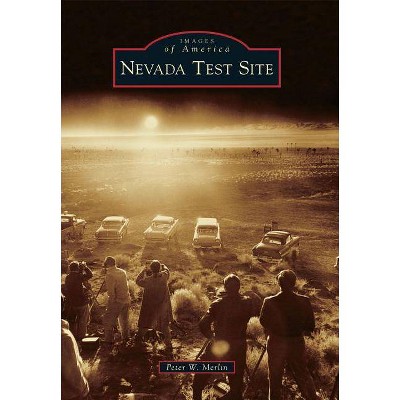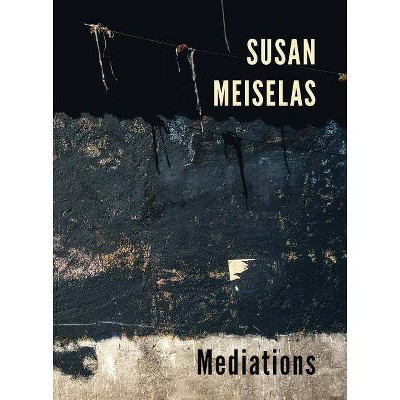The Nevada Test Site - by Emmet Gowin (Hardcover)

Similar Products
Products of same category from the store
AllProduct info
<p/><br></br><p><b> About the Book </b></p></br></br>"Emmet Gowin likes to ask a provocative question: "Which country on earth has had the largest number of nuclear bombs detonated within its borders?" The answer is the United States. Covering approximately 680 square miles, the Nevada National Security Site, formerly known as the Nevada Test Site, was the primary testing location of American nuclear devices from 1951 to 1992; 1,021 announced nuclear tests occurred there, 921 of which were underground. The site, which is closed to the public, including its airspace, contains 28 areas, 1,100 buildings, 400 miles of paved roads, 300 miles of unpaved roads, 10 heliports, and two airstrips. Its surface is covered with subsidence craters from testing, and in places looks like the moon. In 1996, Gowin received permission to document the landscape by air, after over a decade of working to secure access. These aerial views of environmental devastation--made quietly majestic but no less potent in the hands of a master photographer--unveil environmental travesties on a grand scale. While groups of images from the Nevada Test Site series have been published previously, this book will produce the largest number yet, and three quarters of the pictures will not have been published at all. Gowin is the only photographer to have been granted access to this site, which is now permanently closed, post-9/11. Other than images made by the government for geographic purposes, no other images of this landscape exist. The book will feature a preface by photographer Robert Adams (America, b. 1937), whose photographic and written work is concerned with landscape, urbanization, and activism. It will also feature an afterword by Gowin on how he made the images, and their significance to him today."--Provided by publisher.<p/><br></br><p><b> Book Synopsis </b></p></br></br><p><b>A photographic study of the land that served as the main testing site for American nuclear devices for four decades</b> <p/>More nuclear bombs have been detonated in America than in any other country in the world. Between 1951 and 1992, the Nevada National Security Test Site was the primary location for these activities, withstanding more than a thousand nuclear tests that left swaths of the American Southwest resembling the moon. In <i>The Nevada Test Site</i>, renowned American photographer Emmet Gowin (b. 1941) presents staggering aerial photographs of this powerfully evocative place. <p/>Gowin remains the only photographer granted official and sustained access to the Nevada Test Site. For this book, he has revisited his original negatives, made in 1996 and 1997, and fully three-quarters of the images featured here have never been published before. These images show blast areas where sand has been transformed to glass, valleys pockmarked with hundreds of craters, trenches that protected soldiers from blasts, areas used to bury radioactive waste, and debris left behind following tests conducted as deep as five thousand feet below the Earth's surface. Together, these stunning, unsettling views unveil environmental travesties on a grand scale. An essay by Gowin delves into the history of his work at the site, including his decade-long efforts to secure entry, the photographic equipment and techniques employed, and what the images mean to him today. <p/>With a foreword by photographer and writer Robert Adams, <i>The Nevada Test Site</i> stands as a testament to the harms we inflict on our surroundings, the importance of bearing witness, and the possibilities for aesthetic redemption and a more hopeful future.</p><p/><br></br><p><b> Review Quotes </b></p></br></br><br>Gowin's richly saturated prints intensify the contrast of light and shadow, accentuating the land's man-made and natural features. The artificial geometry of roads and waste-storage pads stands out from the organic undulations and gradient washes of the desert, although the two blend together in sites of intensive activity, where human drivers left behind their unruly tracks. . . . His pictures are proof that even humanity's vilest weapons can't entirely void a place of its dignity. As the world warms, the sea rises, the forests burn, and our fellow-creatures suffer, there will still be beauty. Beauty to take comfort in. Beauty to mourn.<b>---Max Norman, <i>New Yorker</i></b><br><br>The only photographer to have been granted official and sustained access to [T<i>he Nevada Test Site</i>], Gowin revisits his original negatives from 1996 and 1997 in his new book. The Nevada Test Site evinces the chilling impact of nuclear weapons on the natural world, reminding us too of the deadly threat they continue to pose to humanity at large.<b>---Madeleine Pollard, <i>Financial Times</i></b><br><p/><br></br><p><b> About the Author </b></p></br></br><b>Emmet Gowin</b> is emeritus professor of photography at Princeton University. His many books include <i>Emmet Gowin</i> and <i>Mariposas Nocturnas</i> (Princeton). His photographs are in collections around the world, including at the Art Institute of Chicago, the Morgan Library and Museum, the Cleveland Museum of Art, the J. Paul Getty Museum, the Metropolitan Museum of Art, the Museum of Modern Art, and the Tokyo Museum of Art. <b>Robert Adams</b> is one of the most esteemed American photographers working today. His work has been published in more than thirty books.
Price History
Cheapest price in the interval: 34.99 on October 23, 2021
Most expensive price in the interval: 34.99 on November 8, 2021
Price Archive shows prices from various stores, lets you see history and find the cheapest. There is no actual sale on the website. For all support, inquiry and suggestion messagescommunication@pricearchive.us




















